Alumni 2009
Martin Hennemann (30.1.) - Andreas Ernst (15.4.) - Timo Anguita (15.4.) - Marta Zub (6.5.) - Marie-Helene Nicol (12.5.) - Dusan Budjas (6.5.) - Claudia Mignone (20.5.) - Matteo Bocchi (27.5.) - Marik Barnabe-Heider (27.5.) - Dominik Schleicher (9.6.) - Maria Victoria Rodriguez Ledesma (6.7.) - Thomas Greif (23.7.) - Surhud More (27.7.) - Giovanna Pedaletti (22.10.) - Javier Rodon (9.11.) - Jonathan Downing (18.11.) - Marcello Cacciato (27.11.) - Jamie O'Sullivan (2.12.) - Anton Vasyunin (2.12.) - Thomas Peters (18.12.) - Rolf Kuiper (21.12.)
Rolf Kuiper (Germany) 21.12.2009
Modeling the formation of massive stars (thesis pdf)
I investigate the radiation pressure problem in the formation of massive stars using a newly developed frequency dependent radiation transport module for three-dimensional hydrodynamics simulations. The nature of the radiative impact depending on the morphology of the stellar environment is examined in one-, two-, and three- dimensional monolithic collapse calculations of massive pre-stellar cores. Contrary to previous research, a highly superior frequency dependent stellar feedback is considered, the vicinity of the forming star is resolved down to 1.27 AU, and the evolution is computed for a factor of ten longer. For the first time a broad survey of the parameter space is possible. The simulations demonstrate the need of including the dust condensation front to compute the radiative feedback correctly. Earlier calculations, which ignore these physics, lead to an artificial truncation of the accretion phase. The most fundamental result is that the formation of a massive accretion disk in slowly rotating cores bypasses the radiative flux through the optically thin atmosphere, enabling steady accretion. A revealed close-by gravitational instability in the disk drives a sufficiently high accretion rate to overcome the residual stellar radiation feedback. This mechanisms allow the star to grow far beyond any limit found in earlier calculations.
Supervisors: Hubert Klahr / Thomas Henning (MPIA)
Thomas Peters (Germany) 18.12.2009

Ionization Feedback in Massive Star Formation (thesis pdf)
Understanding the origin of high-mass stars is central to modern astrophysics. We shed light on this problem using novel radiation-hydrodynamic simulations that consistently follow the gravitational collapse of a massive molecular cloud, the subsequent build- up and fragmentation of the accretion disk surrounding the nascent star, and, for the first time, the interaction between its intense UV radiation field and the infalling material. We show that ionization feedback can neither stop protostellar mass growth nor suppress fragmentation. We present a consistent picture of the formation and evolution of H ii regions that explains the observed morphology, time variability, and ages of ultracompact H ii regions, solving the long-standing lifetime problem.
Supervisor: Ralf Klessen (ITA)
Anton Vasyunin (Russia) 02.12.2009
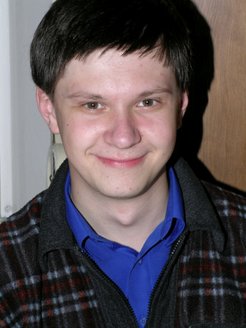
Chemistry in the ISM and disks on the verge of planet formation (thesis pdf)
The general purpose of the thesis work is to improve astrochemical models in the era of ALMA. This era is characterized by the active study of protoplanetary disks and the search for extraterrestrial life.
First, we study how uncertainties in the rate coefficients of chemical reactions affect the abundances and column densities of key molecules in protoplanetary disks. We isolate a group of key species which have column densities that are not very sensitive to the rate uncertainties, making them good potential tracers of physical conditions in disks. We identify about a hundred reactions with the most problematic rate coefficients, which need to be determined more accurately in order to improve the reliability of modern astrochemical models.
Second, we build a realistic astrochemical model using a Monte Carlo approach to all chemical processes, which is the first time this has been done. This allows us to properly take into account the stochastic nature of grain surface chemical reactions, which are of essential importance for the formation of organic molecules -- i.e., the precursors of life as we know it. The recent modified rate approach (MRE) of Garrod et al. (2008) is shown to be the most accurate fast approach of accounting for stochastic effects in astrochemical modeling.
Finally, we apply our model to the study of the chemical composition of an evolving protoplanetary disk with grain growth, in order to reveal chemical tracers of this process. For the first time, a state-of-the-art astrochemical model is coupled with a detailed model of grain growth and sedimentation.
Supervisor: Dmitry Semenov / Thomas Henning (MPIA)
Jamie O'Sullivan (Ireland) 02.12.2009

Molecular Cooling and Emissions in Large Scale Simulations of Protostellar Jets (thesis pdf)
The origin of infrared molecular emission associated with Class 0 and Class I protostellar outflows (such as HH211 and HH46/47) is still not fully resolved. One successful model for describing such phenomena is the jet-driven outflow model. It proposes that the emission occurs as a high velocity collimated jet outflow shocks, excites and entrains the molecular ambient matter. Although this scenario does achieve significant success in describing the dynamics and morphology of the outflow, the exact nature of the type of shock causing the emission in such a case - J-type or C-type - is still unclear. Physical conditions in the gas, such the ionisation fraction and magnetic field, are crucial parameters determining the type of shock that will form. However, the immediate region around the class 0 sources producing molecular outflows usually consists of dense, high-extinction gas within a molecular core, impeding observational data regarding these details. Therefore, numerical modelling can play an important role in explaining the observed outflows. We have developed and tested a module, implemented within the PLUTO astrophysical code, to simulate the non-equilibrium molecular chemistry and cooling in a jet outflow which is interacting with its surrounding molecular core gas. Using large scale adaptive mesh magnetohydrodynamical simulations, we predict observationally significant amounts of infrared emissions from J-shock excited molecular gas. We find that the emission can be caused either by direct shocking (''prompt entrainment'') or entrainment and ablation of the ambient gas. We find that the nature of this emission is strongly dependent on absolute and relative densities of the jet and ambient medium, and on the presence of moderate magnetic fields (30 - 120 \muG) in the core. Comparing our results with observations, we confirm that the magnitudes for the emission strength agree with those observed in several sources. Furthermore we demonstrate how the appearance of the emission in different sources depends on the parameters explored here.
Supervisor: Max Camenzind (LSW)
Javier Rodon (Argentina) 09.11.2009

The fragmentation of massive star-forming Regions (thesis pdf)
Since its discovery by E. Salpeter in 1955, the high-mass end of the Initial Mass Function (IMF) has been continuously tested, and its slope has not changed from the value -2.35 originally calculated by Salpeter, the "Salpeter value". Furthermore, it is found that this value is universal. It not only describes the mass distribution of stellar masses in the Milky Way but also in other galaxies.
Stars form individually or in systems within molecular clouds, from local condensations of sizes on the order of ~0.01 pc, the so-called "dense cores". In the case of low-mass star-forming regions, it is found that the Core Mass Function (CMF) resembles the Salpeter IMF. However, in the case of massive star-forming (MSF) regions, the answer is not that clear. The first CMF for a MSF region was derived in 2004 by H. Beuther and P. Schilke for the MSF region IRAS19410+2336. They found that this CMF also resembled the Salpeter IMF. Since then, a few more CMFs for MSF regions have been derived, always with exponents comparable to Salpeter. This suggested that the CMF and the IMF are related in a one-to-one or nearly one-to-one relationship, and that the fragmentation processes within a molecular cloud would set the shape of the IMF at an early evolutionary stage.
Attempting to test that scenario, in this thesis I present and analyze high angular resolution interferometric observations of several MSF regions at millimeter wavelengths, describing their protostellar content and deriving their CMF whenever is possible. We confirm the result of Beuther & Schilke (2004) and obtain a CMF with a power-law slope similar to the Salpeter IMF, however for other MSF regions we obtain a CMF with a power-law slope flatter than Salpeter. This difference suggests that the IMF might not be set at the moment of the fragmentation of the cloud, but insted would be a result of the evolution of the cloud, starting with a flatter mass distribution that becomes steeper at later evolutionary stages. This result is not conclusive yet, and we suggest a series of observations that would be needed to fully test it.
Supervisor: Henrik Beuther (MPIA)
Giovanna Pedaletti (Italy) 22.10.2009

Very high energy emission from passive supermassive black holes (thesis pdf)
The H.E.S.S. experiment, an array of four Imaging Cherenkov Telescopes, widened the horizon of Very High Energy (VHE) astronomy. Its unprecedented sensitivity is well suited for the study of new classes of expected VHE emitters, such as passive galactic nuclei that are the main focus of the work presented in this thesis. Acceleration of particles up to Ultra High Energies is expected in the magnetosphere of supermassive black holes (SMBH). The radiation losses of these accelerated particles are expected to reach the VHE regime in which H.E.S.S. operates. Predicted fluxes exceed the sensitivity of the array. However, strong photon fields in the surrounding of the acceleration region might absorb the produced radiation. Therefore observations focus on those galactic nuclei that are underluminous at lower photon energies. This work presents data collected by the H.E.S.S. telescopes on the test candidate NGC 1399 and their interpretation. While no detection has been achieved, important constraints can be derived from the obtained upper limits on the maximum energy attainable by the accelerated particles and on the magnetic field strength in the acceleration region. A limit on the magnetic field of B<74 Gauss is given. The limit is model dependent and a scaling of the result with the assumptions is given. This is the tightest empirical constraint to date. Because of the lack of signal from the test candidate, a stacking analysis has been performed on similar sources in three cluster fields. A search for signal from classes of active galactic nuclei has also been made in the same three fields. None of the analyzed samples revealed a significant signal. Also presented are the expectations for the next generation of Cherenkov Telescopes and an outlook on the relativistic effects expected on the VHE emission close to SMBH.
Supervisor: Stefan Wagner (LSW)
Jonathan Downing (Canada) 18.11.2009

Compact binary populations in Globular Clusters and prospects for gravitational wave detection (thesis pdf, 16 MB)
The inspiral and merger of compact binary stars will be major detection events for interferometric gravitational wave observatories. These observatories operate most effectively by comparing their output to template waveforms. In order to make these templates the physical parameters of the source population must be understood. Compact binaries in the galactic field have been investigated using population synthesis models but in dense stellar environments interactions can alter the binary population and may enhance the merger rate.
I study compact binaries in star clusters using a Monte Carlo model for the dynamics. I find that the black hole population interacts strongly, leading to an enhancement in both the number of black hole binaries and the black hole binary merger rate. Due to the high interaction rate the majority of black hole binaries are ejected and thus the mergers occur in the galactic field. I find a promising rate of $1-100$ detections per year for the next generation of ground-based gravitational wave detectors and two possible sources for space-based detectors, both highly eccentric. I conclude that star clusters must be taken into account in order to predict accurate event rates for gravitational wave detectors.
Supervisor: Rainer Spurzem (ARI)
Marcello Cacciato (Italy) 27.11.2009

Galaxy-Dark Matter Connection : from Astrophysics to Cosmology (thesis pdf, 16 MB)
Galaxy-galaxy (g-g) lensing represents an ideal technique to constrain the dark matter distribution on galaxy scales. The required accuracy in the signal can be achieved only by stacking many foreground galaxies and averaging the ellipticity of the resulting background galaxies. Unfortunately, the stacking procedure complicates any astrophysical interpretation. In order to extract information from the composite g-g lensing signal, a reliable model of the way galaxies populate dark matter haloes is required. We use a realistic description of the halo occupation statistics based on the conditional luminosity function. It provides a statistical prescription for the number of galaxies with a given luminosity living in dark matter haloes of a given mass. Being “a priori†constrained by the luminosity dependence of the galaxy clustering, it can be used for predicting the g-g lensing signal without any additional tuning. Our model allows a thorough understanding of the different terms contributing to the signal. We carefully explore the effect of the assumptions entering the model. Our theoretical predictions are in very good agreement with SDSS data. Furthermore, we use the sensitivity of this technique to the underlying cosmological model to study the feasibility of a joint analysis of galaxy clustering and g-g lensing as a novel technique to constrain the values of cosmological parameters such as Omega_m and sigma_8 . We show that uncertainties and systematics in the model do not significantly affect the model predictions. We conclude that a combined analysis of galaxy clustering and g-g lensing can be used as a novel, complementary and competitive technique to constrain cosmological parameters.
Supervisor: Frank van den Bosch (MPIA)
Surhud More (India) 27.07.2009

Galaxy-Dark Matter Connection : Insights from Satellite Kinematics (thesis pdf, 2MB)
A thorough knowledge of the connection between the mass of dark matter haloes and the properties of their central galaxies is crucial to understand the physics of galaxy formation. The kinematics of satellite galaxies is an excellent technique to measure the dark matter halo masses. However, the kinematics can be measured with high signal-to-noise only by stacking the signal around central galaxies with similar properties, which results in various systematic biases and complicates the interpretation of the signal. This thesis presents an analytical framework that accounts for systematic biases and selection effects and aids in the interpretation of the kinematics of satellite galaxies. A new method is established to obtain the average scaling relations between halo mass and central galaxy properties, and the scatter in these relations simultaneously. After a thorough testing of this method using a realistic mock galaxy catalogue, it is applied to the Sloan Digital Sky Survey to extract the halo mass-luminosity and halo mass-stellar mass relationship of central galaxies and their scatter. Comparisons with other probes of these scaling relations, such as galaxy-galaxy lensing, show good agreement which implies that these scaling relations are well established and supported by various astrophysical probes. Physical insights about these scaling relations, in particular their scatter, gained by the analysis of a semi-analytical model for galaxy formation are also presented. Finally, the inferred scaling relations crucially depend on the transparency of the Universe. By performing a test of the “Etherington relation†between the distances measured by standard rulers and by standard candles, a quantitative measure of the cosmic transparency, which is relatively free from astrophysical assumptions, is obtained.
Supervisor: Frank van den Bosch (MPIA)
Thomas Greif (Germany) 23.07.2009
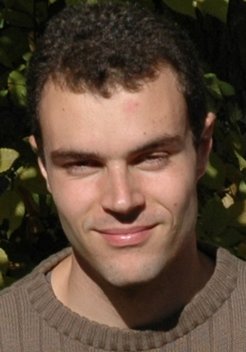
The Formation of the First Galaxies (thesis pdf, 16 MB)
The primary concern of this thesis is to understand the formation and properties of the first galaxies, as well as the influence of the first stars in terms of radiative, mechanical and chemical feedback. In particular, we elucidate the role of turbulence, ionizing radiation by massive Population III stars, mechanical feedback by highly energetic supernovae, and chemical enrichment. In light of the next generation of ground- and space based telescopes, we derive their observational signature in terms of recombination radiation, bremsstrahlung and 21 cm emission. We find that the cumulative 21 cm signal of the first H II regions will likely be observable by the planned SKA, while the recombination radiation from the first starbursts might be observable by JWST. These probes are essential to test the theoretical framework of the first stars and galaxies and shed some light on this elusive period of cosmic history.
Supervisor: Ralf Klessen (ITA)
Maria Victoria Rodriguez Ledesma (Argentina) 06.07.2009

Rotation Studies of Young Very Low Mass Stars and Brown Dwarfs (thesis pdf, 2 MB)
Rotation studies over as large a range of ages and masses as possible are important for constraining the angular momentum evolution of young stellar objects (YSO). Of particular interest are the very low mass (VLM) stars and brown dwarfs (BDs), because of the relatively small number of known rotational periods (Prot) in that mass range. This thesis for the first time provides important information on rotational properties of a large sample of young VLM stars and BDs.
The extensive rotational period study of YSOs in the 1 Myr old Orion Nebula Cluster (ONC) presented here is based on a deep photometric monitoring campaign. As a result, 487 periodic variables (PVs) were found (377 of which are new) with estimated masses between 0.5-0.015 M_odot, 124 of which are BD candidates. This is by far the most extensive and complete rotational period data set for young VLM stars and BDs to date. The dependence of the period distribution on mass and level of rotational modulation was investigated and a comparison with higher mass PVs in the ONC and with the PVs in the approx. 2 Myr old open cluster NGC 2264 was carried out. Substellar objects were found to rotate on average faster than the VLM stars, a trend which was already seen for higher mass stars. In addition, the results presented here suggest a dependence of the Prot on position within the ONC, with the objects located near the cluster center showing on average larger Prot. This result can be explained by a possible age spread in the ONC with a somewhat younger central region.
An interesting correlation between Prot and modulation amplitude was found in which PVs with larger amplitudes rotate on average slower than those with smaller amplitudes, which can in principle be explained by different magnetic field topologies.
In addition, 732 periodic variables in the ONC with known JHK colours were analysed in order to investigate whether rotation periods correlate with the presence of circumstellar accretion disks in particular at very small masses. A highly significant rotation-disk correlation was found among the low and very low mass periodic variables (0.075 < M < 0.4 M_odot), in which objects with NIR excess tend to rotate slower than objects without NIR excess. Interestingly, no correlation was found in the substellar regime. Possible reasons for the absence of such a correlation are discussed in detail.
Supervisor: Rheinhard Mundt (MPIA)
Dominik Schleicher (Germany) 09.06.2009
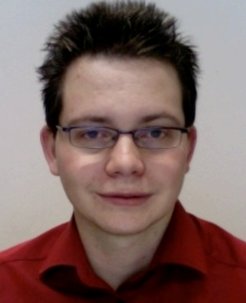
The early Universe: probing primordial magnetic fields, Dark Matter models and the first supermassive black holes (thesis pdf, 8 MB)
The goal of this work is to better understand the universe between recombination and reionization and to outline new possibilities to explore it in more detail. This concerns the stellar population, the physics of the early universe, and the formation of the first supermassive black holes. With the reionization optical depth from WMAP 5, I derive upper limits for the strength of primordial magnetic fields and dark matter annihilation / decay, as well as constraints for stellar population models. Further constraints can be found from the gamma-ray and neutrino background, which rule out s-wave annihilation of light dark matter. It was shown that future 21 cm observations will constrain primordial magnetic fields even further. To improve our understanding of the origin of the first supermassive black holes and their high metallicity, I explore how they can be observed with ALMA and JWST between redshift 5 and 15. For this purpose, I estimated and classified the available observables, and I provide several independent estimates for the expected number of high-redshift black holes. In spite of large model uncertainties, one can expect to find at least a few sources in a solid angle similar to the Hubble-Deep-Field.
Supervisor: Ralf Klessen (ITA)
Marik Barnabe-Heider (Canada) 27.05.2009

Performance and stability tests of bare high purity germanium detectors in liquid argon for the GERDA experiment (thesis pdf, 30 MB)
GERDA will search for neutrinoless double beta decay of 76Ge by using a novel approach of bare germanium detectors in liquid argon (LAr). Enriched germanium detectors from the previous Heidelberg-Moscow and IGEX experiments have been reprocessed and will be deployed in GERDA Phase-I. At the center of this thesis project is the study of the performance of bare germanium detectors in cryogenic liquids. Identical detector performance as in vacuum cryostats (2.2 keV FWHM at 1.3 MeV) was achieved in cryogenic liquids with a new low-mass detector assembly and contacts. One major result is the discovery of a radiation induced leakage current (LC) increase when operating bare detectors with standard passivation layers in LAr. Charge collection and build-up on the passivation layer were identified as the origin of the LC increase. It was found that diodes without passivation do not exhibit this feature. Three month-long stable operation in LAr at 5 pA LC under periodic gamma irradiation demonstrated the suitability of the modified detector design. Based on these results, all Phase-I detectors were reprocessed without passivation layer and subsequently successfully characterized in LAr in the GERDA underground Detector Laboratory. The mass loss during the reprocessing was 300 g out of 17.9 kg and the exposure above ground 5 days. This results in a negligible cosmogenic background increase of 5 x 10^-4 cts/(keV kg y) at 76Ge Q for 60Co and 68Ge.
Supervisor: Stefan Schönert (MPIK)
Matteo Bocchi (Italy) 27.05.2009
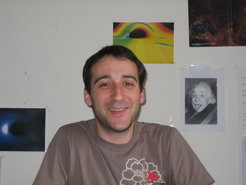
Magnetohydrodynamic instabilities of astrophysical jets (thesis pdf, 6 MB)
The remarkable stability of astrophysical jets is not yet fully understood and requires further investigation. In order to study the effects of an antiparallel magnetic field topology on the linear stage and nonlinear evolution of the Kelvin Helmholtz (KH) instability, we performed direct numerical simulations to solve the ideal magnetohydrodynamic equations in a variety of initial configurations. Single shear layers presented growth rates of the instability higher than in the uniform (parallel) case, and a typical oscillation wave vector Ka ≃ 0.4. Vortical motions were observed for Alfv´en Mach numbers Ma > 2. The presence of tearing type magnetic islands, driven by the KH instability, reduced the magnetic field enhancement around the perimeter of the KH vortices proper of the KH instability and, subsequently, reduced the value of the magnetic saturation energy as compared to the uniform field case. The extended domain simulations showed an inverse cascade to bigger scales, more turbulent than in the uniform case. The lower magnetic amplification, due to the islands, moved the threshold for three-dimensional (3D) reorganization to a laminar flow from Ma . 50 (uniform) to Ma . 20 (antiparallel). Two-dimensional (2D) spatial slab-jet simulations showed episodic disruption and revival of the flow due to a magnetic field amplification process, previously believed to be present only in subsonic flows. This result, retrieved also in 3D simulations, is the same for uniform and antiparallel magnetic fields.
Supervisor: Max Camenzind (LSW)
Claudia Mignone (Italy) 20.05.2009

Model-independent reconstruction of the expansion rate of the universe through combination of different cosmological probes (thesis pdf, 2 MB)
This work proposes a method to constrain the cosmic expansion rate and the linear growth factor for structure formation from different cosmological measurements, without reference to a specific Friedmann model and its parameters. First, a model-independent reconstruction technique to estimate the expansion rate from luminosity distance data has been developed: it converts the integral relation between the expansion function and the luminosity distance into a Volterra integral equation, which is known to have a unique solution in terms of a Neumann series. Expanding observables such as the luminosity distances to type-Ia supernovae into a series of orthonormal functions, the integral equation can be solved and the cosmic expansion rate recovered within the limits allowed by the accuracy of the data. The performance of the method is demonstrated through application to synthetic data sets of increasing complexity, including a toy model with a sudden transition in the expansion rate. With the additional assumption of local Newtonian dynamics, the growth rate for linear structure formation can be calculated from the estimate of the expansion rate, in the redshift interval over which supernovae are available, and employed in the analysis of cosmic shear data: combined to a traditional, Lambda-CDM analysis of the same data set, this approach allows to tighten the constraints on the matter density parameter, Omega_m, and the normalisation of the power spectrum, sigma_8. Furthermore, the method to reconstruct the expansion rate can be applied to angular-diameter distance data from baryon acoustic oscillation experiments; an optimisation of the orthonormal function set employed in the algorithm has also been performed, by means of a principal component analysis.
Supervisor: Matthias Bartelmann (ITA)
Dusan Budjas (Slovakia) 06.05.2009
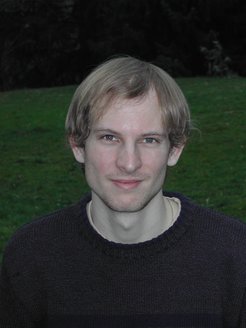
Germanium detector studies in the framework of the GERDA experiment (thesis pdf, 26 MB)
The GERmanium Detector Array (GERDA) is an ultra-low background experiment under construction at Laboratori Nazionali del Gran Sasso. GERDA will search for 76Ge neutrinoless double beta decay with an aim for 100-fold reduction in background compared to predecessor experiments. This ambition necessitates innovative design approaches, strict selection of low-radioactivity materials, and novel techniques for active background suppression. The core feature of GERDA is its array of Germanium detectors for ionizing radiation, which are enriched in 76Ge. Germanium detectors are the central theme of this dissertation. The first part describes the implementation, testing, and optimisation of Monte Carlo simulations of Germanium spectrometers, intensively involved in the selection of low-radioactivity materials. The simulations are essential for evaluations of the gamma ray measurements. The second part concerns the development and validation of an active background suppression technique based on germanium detector signal shape analysis. This was performed for the first time using a BEGe-type detector, which features a small read-out electrode. As a result of this work, BEGe is now one of the two detector technologies included in research and development for the second phase of the GERDA experiment. A suppression of major GERDA backgrounds is demonstrated, with (0.93 ± 0.08)% survival probability for events from 60Co, (21 ± 3)% for 226Ra, and (40 ± 2)% for 228Th. The acceptance of 228Th double escape events, which are analogous to double beta decay, was kept at (89 ± 1)%.
Supervisor: Wolfgang Hampel (MPIK)
Marie-Helene Nicol (Canada) 12.05.2009

Investigation of the stellar population in galaxies since z=2 by NIR photometry (thesis pdf, 8 MB)
This study investigates galaxy evolution in the last 10 Gyr of the age of the Universe. To access the high redshift Universe deep near infrared observations have been carried out in the frame of the COMBO-17+4 (Classifying Objects by Medium-Band Observations) survey. Photometric redshifts, rest-frame SEDs and masses have been obtained for 14286 galaxies down to an observed magnitude H=21.7 mag in 0.2 square degree of the A901-field. The red evolved and the blue star-forming galaxy populations distributions have been followed through cosmic time. An evolving colour-magnitude relation as a function of lookback time has been derived in order to separate the red galaxies from the blue ones. Our results show that the galaxy bimodality persist out to z=1.6.The luminosity and the mass function for the red and the blue galaxy populations has been investigated. Our results show that the characteristic magnitude M* for both galaxy population have considerably dimmed between 2>z>0.2. The massive end of the mass function is dominated by the red galaxies at z<1, whereas above z=1 red evolved and blue star-forming galaxy populations contribute in similar numbers.
Supervisor: Klaus Meisenheimer (MPIA)
Marta Zub (Poland) 06.05.2009
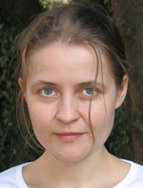
Galactic Aspects of Gravitational Microlensing: High Magnification Events and Stellar Limb-darkening of a Source Star in the Galactic bulge (thesis pdf, 4 MB)
Gravitational microlensing provides a powerful tool to search for extrasolar planets of stars at distances of order of several kpc. The suspicion of a planetary signal in the two high magnification events OGLE 2006-BLG-245 and MOA 2006-BLG-099 led us to perform a detailed modelling and analysis of those two events. Based on the comparison of single-lens and binary-lens models, we demonstrate that the observed light curve deviations are not caused by a planetary companion. Our modelling and analysis of four other high magnification events illustrate the possibility to study detection efficiencies of microlensing data sets to planetary companions. We also present a detailed study of the single-lens OGLE 2004-BLG-482 microlensing event, used to measure the brightness profile of the background lensed star located in the Galactic bulge. We performed data reduction and analysis of well sampled observations of this event obtained by the PLANET, OGLE and MicroFUN collaborations in the I, R and clear filters. We also used a high resolution spectrum obtained with VLT/UVES close to the peak of the light curve to determine the fundamental parameters of the source star, that we find to be a cool red M3 giant with Teff = 3667±150K, log g = 2.1±1.0. We then performed a detailed microlensing modelling of the light curve to measure linear limb-darkening coefficients and to provide new diagnostics of such measurements through microlensing. We compare our results to model-atmosphere predictions based on limb-darkening coefficients for the corresponding stellar parameters. Our limb-darkening measurements agree very well with predictions of the model atmosphere, for both linear limb-darkening laws and alternative limb-darkening profiles based on a principal component analysis of ATLAS stellar atmosphere models.
Supervisor: Joachim Wambsganss (ARI)
Timo Anguita (Chile) 15.04.2009

A combined observational and theoretical study of gravitationally lensed quasars (thesis pdf, 4 MB)
In this thesis we study gravitational lensing of quasars, from strong lensing to microlensing. We investigate one strong lens candidate recently discovered in the COSMOS field: COSMOS 5921+0638. Our analysis of the nature of the lens reveals that the system is composed of an early type foreground galaxy at redshift z_l=0.551+/-0.001 lensing a background low luminosity AGN and its host galaxy at a candidate redshift of z_s=3.14+/-0.05. We show that flux anomalies observed in the lensed images are likely due to substructure or microlensing by stars in the lensing galaxy. Extending the analysis of the optical emission of lensed quasars, we have used integral field spectroscopy to study four gravitationally lensed quasar systems: HE 0230-2130, RX J0911+0551, H 1413+117 and B 1359+154, as well as objects in their line-of-sight. The first three systems show anomalous flux ratios consistent with microlensing by stars in their lensing galaxies. In the final part of this work, we probe the structure of the accretion disk of the lensed quasar Q 2237+0305 by the analysis of a high magnification microlensing event seen in the so-called "image C" of the system in the year 1999. Using multi-band observations and microlensing simulations, we measure an accretion disk size of Gaussian width sigma_g'=4.6^{+3.4}_{-3.4} x 10^15 sqrt{M/0.1M_sun} cm and a ratio sigma_r'/sigma_g'=1.3^{+0.5}_{-0.2}, without the use of any prior, and of Gaussian width sigma_g'=1.3^{+0.2}_{-0.7} x 10^15 sqrt{M/0.1M_sun} cm and a ratio sigma_r'/sigma_g'=1.5^{+0.9}_{-0.3} with a prior on the relative velocity between source and microlenses. Both results are in agreement with the predictions of a standard Shakura-Sunyaev disk model. The use of multi-band observations revealed that the magnification event seen in image C of Q2237+0305 was produced by a caustic crossing with a confidence greater than 74%.
Supervisor: Joachim Wambsganss (ARI)
Andreas Ernst (Germany) 15.04.2009

Dissolution of Star Clusters in the Galaxy and its Center (thesis pdf, 35 MB)
This thesis is concerned with investigations on the dissolution of star clusters in the tidal field of the Galaxy and in particular its center. At first the escape process of stars from star clusters is studied in the framework of chaos-theoretical considerations. Already in the linear tidal approximation it is possible to compute the basins of escape and the chaotic saddle for the system. After the stars have left the star cluster they form tidal arms (or tails) due to the differential rotation of the Galaxy. For star clusters on circular orbits the theoretical framework for the investigation of the properties of tidal arms is discussed. The theory is applied for a star cluster model in the Galactic center. For this purpose a new N-body program called "nbody6gc" has been developed. The algorithm is described in detail and the results of N-body simulations are discussed. At certain positions, well-defined clumps develop in the tidal arms due to the epicyclic motion of the stars. The positions of the clumps are calculated with the analytical theory. Furthermore, a classification of the cluster stars according to radius and specific Jacobi energy is introduced in order to explain the dissolution times and a few results on the "paradox of youth" are formulated.
Supervisor: Andreas Just (ARI)
Martin Hennemann (Germany) 30.01.2009

Multiwavelength observations of massive star-forming regions selected in the far-infrared (thesis pdf, 60 MB)
The lack of observations of the earliest stages in high-mass star formation motivated the selection of massive star-forming regions using the 170 µm ISOPHOT Serendipity Survey. The evaluation of comprehensive follow-up observations, covering near-infrared to (sub-)millimetre wavelengths, identifies massive clumps and characterises the star-forming content in detail. The clumps comprise a large fraction of cold dusty material at temperatures between 12 and 22 K, and several have masses of 100 solar masses or more. Star formation has initiated in every clump, as they harbour embedded sources detected in the mid-infrared that represent low- to intermediate-mass young stellar objects. One case study uses millimetre interferometry and discovers two compact cores of about 15 solar masses embedded in a massive clump. They are driving energetic outflows and may accrete at high rates, and thus represent examples for the first stages of forming intermediate- to high-mass stars. The importance of high spatial resolution in the infrared for the study of high-mass star formation drives dedicated observing programmes with the Herschel Space Observatory. Furthermore, an active part in the preparation of the JWST MIRI instrument was taken because in particular its unprecedented imaging capabilities will allow to constrain crucial properties of the investigated sources.
Supervisor: Dietrich Lemke (MPIA)
